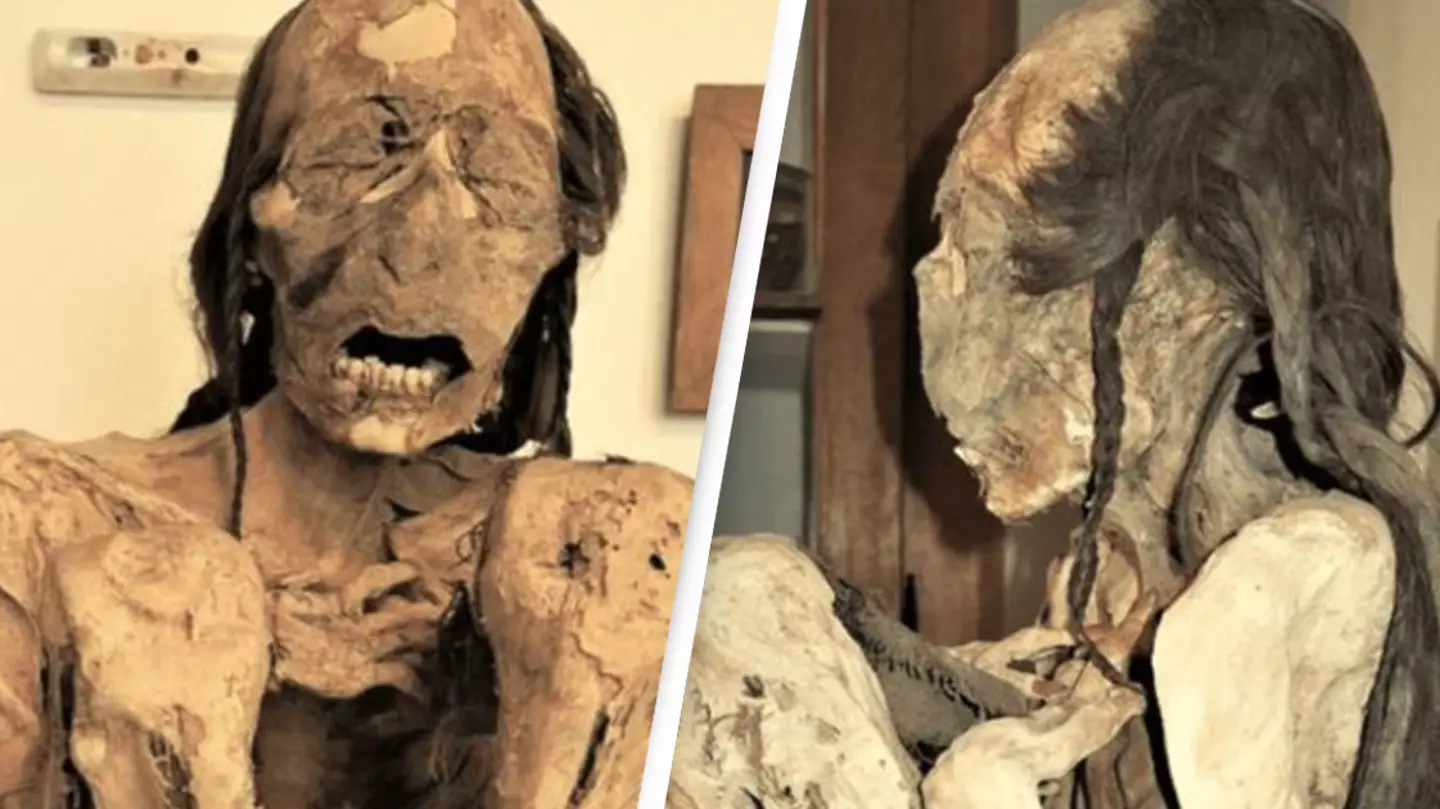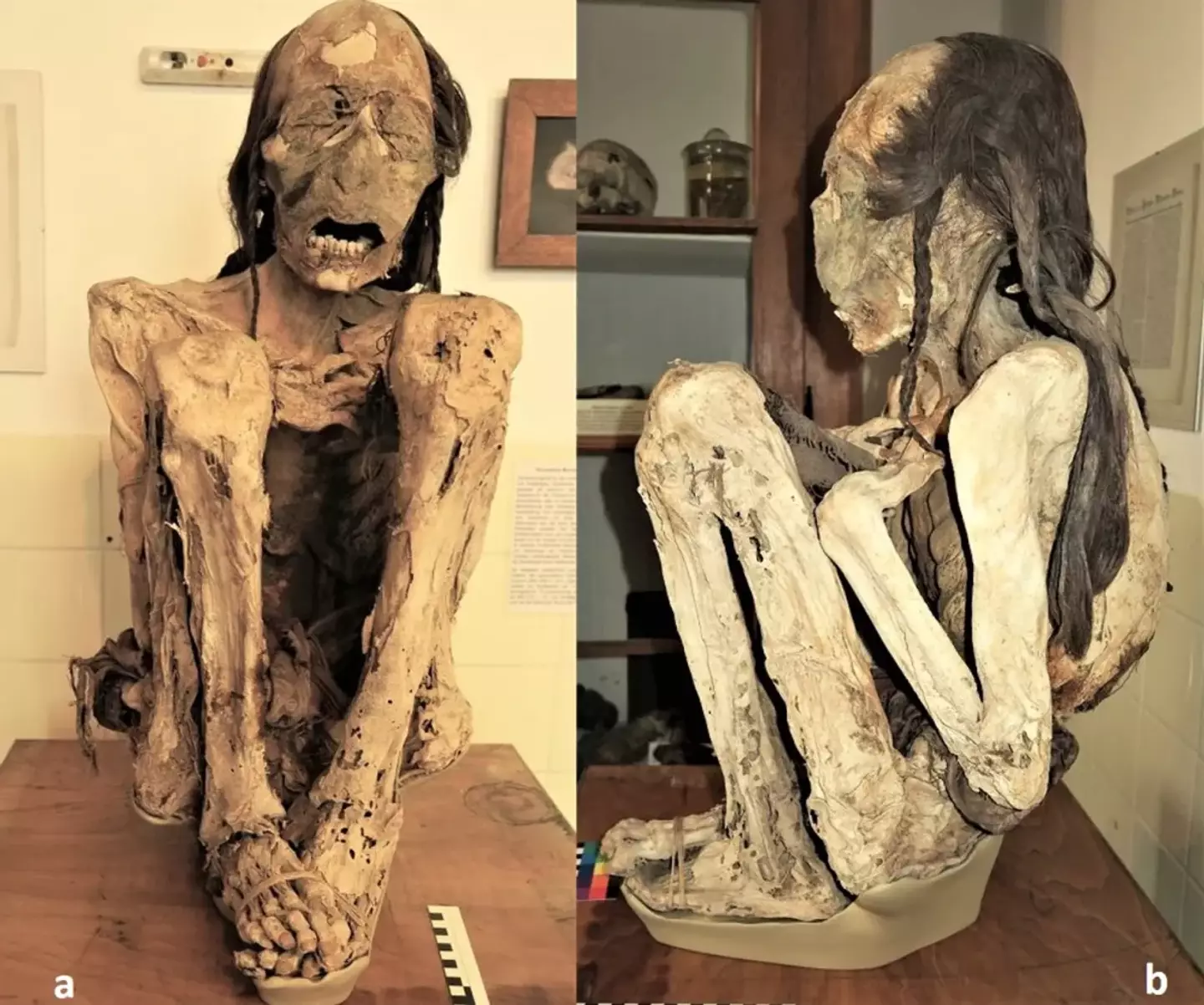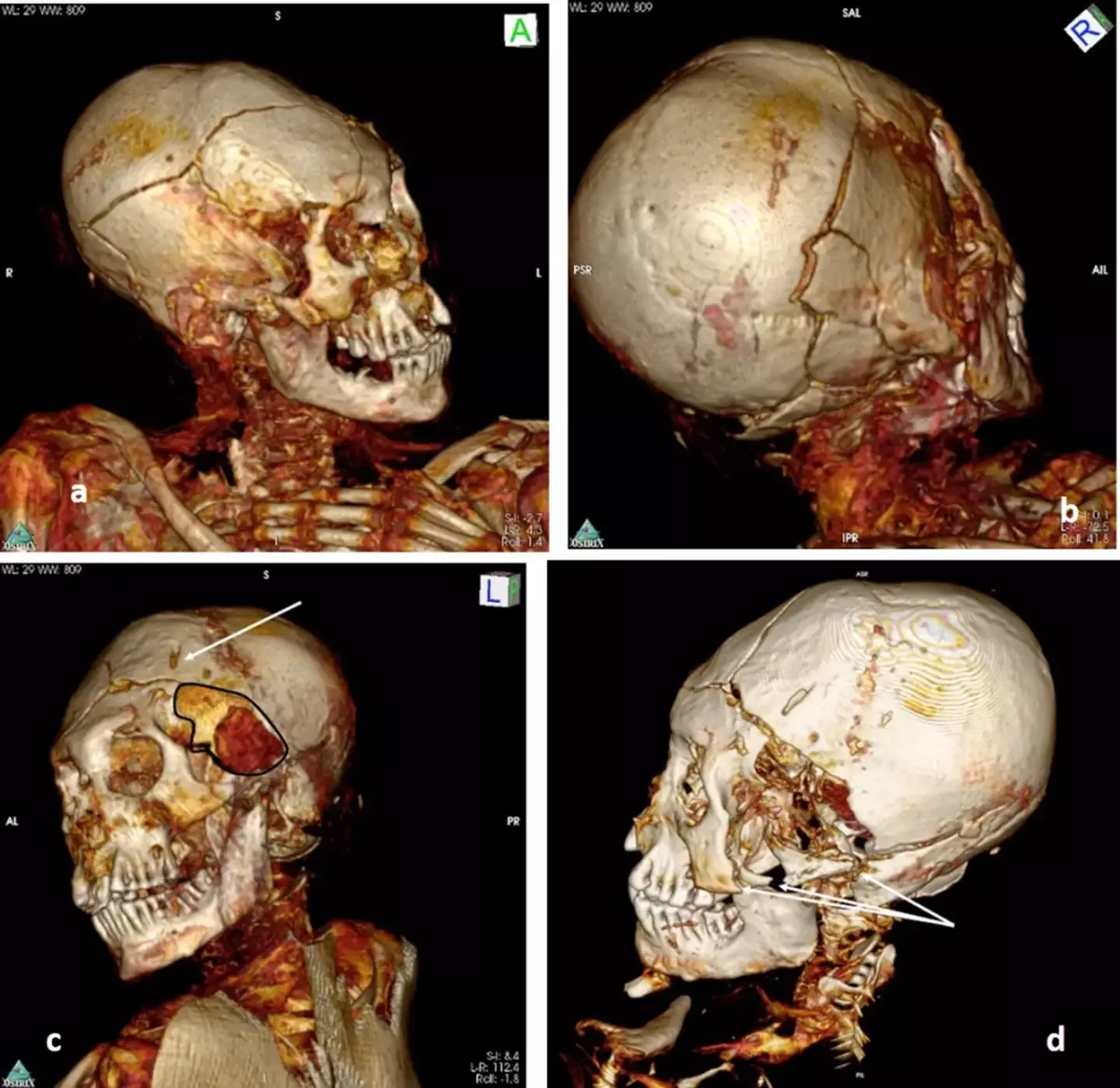
WARNING: CONTAINS IMAGES OF HISTORICAL MUMMIES
An autopsy has found the cause of death of two South American mummies, but the pictures aren't for the fainthearted.
The mummies were thought to have been killed between 740 and 1,120 years ago.
An article from iflscience.com has the full details, with scientists being able to delve into what caused their respective untimely demises.
Advert
The mummified remains have undergone a virtual autopsy, and the findings have been published to Frontiers In Medicine.

The Marburg mummy originally came from a fishing community in the Arica culture, in the country now known as Chile.
Meanwhile, it was revealed that the Delémont mummy (found as part of a pair alongside a female), originated from the Arequipa region of what is now Peru.
Advert
What was unusual about the Delémont mummy is that it was buried face-up. But both mummies suffered the same gruesome ends after succumbing to what is being described as ‘extreme and intentional violence'.
Researchers discovered evidence of the violent trauma inflicted on the corpses by using computer tomography - a 3D CT scan in Lehman’s terms - to examine the remains.
Sadly, neither mummy suffered any dignity in death. The Marburg mummy was believed to be killed in one of two ways, according to the writers of the research paper.
“One assaulter hit the victim with full force on the head and [a] second assaulted, stab[bed] the victim (who still was standing or kneeing) in the back,” the authors write.
Advert
“The same or another assaulter standing on the right side of the victim struck the head and then turned to the back of the victim and stabbed him.”

Things did not turn out much better for the Delémont man, with researchers determining that he showed 'massive trauma against the cervical spine which represent most likely the cause of death'.
They added: "The significant dislocation of the two cervical vertebral bodies itself is lethal and may have led to immediate death.”
Advert
If you had a choice of either of the two ways to go, then perhaps the less painful demise of the Delémont mummy would have been the preferable option.
Corresponding author Dr Andreas G Nerlich, a professor at the Department of Pathology of Munich Clinic Bogenhausen in Germany, added: “Here we show lethal trauma in two out of three South American mummies that we investigated with 3D CT.
“The types of traumas we found would not have been detectable if these human remains had been mere skeletons.
“The study of human mummified material can reveal a much higher rate of trauma, especially intentional trauma than the study of skeletons.
Advert
"There are dozens of South American mummies which might profit from a similar investigation, as we did here.”
If you have a story you want to tell, send it to UNILAD via [email protected]